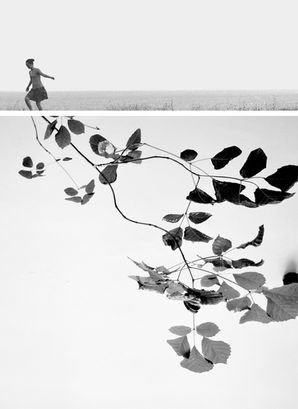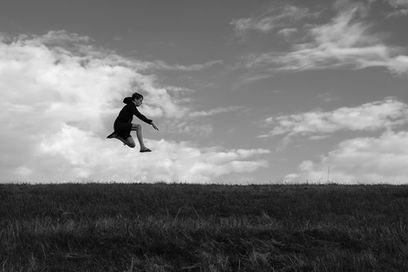
DE-SIDERA
February 4, 2022
INTERVIEW
PHOTOGRAPHY Gabriele Gentile
INTERVIEW Melanie Meggs
In a world of ever-evolving technology, it can be easy to forget that the power of photography is rooted in the ability to capture moments in time and immortalize them for generations to come. It's a special art form, but one that takes skill and dedication to perfect. This is especially true for photographer Gabriele Gentile, whose work focuses on the time-stopping nostalgia of decaying structures across Italy.
Gabriele was born and raised in Parma and studied the humanities and communication fields, but it wasn't until his thirties that he got into digital photography. Immediately captivated by the potential of the art form, Gabriele has since devoted himself to capturing and preserving the beauty of these sites from the past, focusing on the history and charm they exude.
In his project DE-SIDERA, Gabriele has sought to showcase the remarkable range of structures that time has left behind, including villas, palaces, castles, theaters and hotels. He has been driven by a passion to replicate the timeless beauty of these places through photography, with a sense of nostalgic reverence for their former glory. Gabriele's photos give viewers a glimpse of a bygone era and the beauty of decay. Each image invites us to pause and ponder all that has come before us, while also inspiring us to appreciate the present moment. Through his stunning photographs, Gabriele brings together the past and present, reminding us of the power of photography as an art form that captures and preserves moments in time.

“I have been hunting for these places since six years ago, traveling all around Italy looking for abandoned beauty, to be able to eternalize it with my photographs. Waking up in the middle of the night, kilometres of Italy between deserted highways and narrow streets of small villages, intricate woods and wild gardens to cross. But when you are inside every effort disappears: you look up and that beauty, illuminated by the sunrise, it envelops and pervades you, with the taste of dust and background of silence. It's just you and her, the great abandoned beauty. The clocks have stopped and time waits outside.”
IN CONVERSATION WITH GABRIELE GENTILE
THE PICTORIAL LIST: Gabriele please tell us about your project DE-SIDERA? What does the title mean and where does it come from? What was the inspiration behind your project and when did it begin? Is it an ongoing project?
GABRIELE GENTILE: 'De-sidera' is undoubtedly my most substantial project, both in terms of the number of shots and the time and energy devoted to it. In fact, my approach in a serious way to the photography I mentioned above substantially coincides with the beginning of this project, a project that I continue to carry out today, although I try not to divert attention from other ideas and photographic genres that are a part of me. heart. Abandoned places fascinate me since I was a child, after all they represent ancestrally the unknown to be (re)discovered, a limit to be overcome, and their most magnificent part, which is the one I am looking for specifically, satisfies the aesthetic sense that is at the basis of my idea of photography. The term de-sidera comes from Latin (language studied in my classical path) and literally means "lack of stars". It immediately seemed like a perfect intuition as the title of this project, for various reasons: it indicates a desire in the sense of lack, nostalgia, and the nostalgic side of these photographs, as well as of my character, is very accentuated, as is the strong my desire to enter these places and discover the beauty hidden inside. Furthermore, by photographing for my precise stylistic choice only the interiors of these buildings and never their external appearance, the lack of stars also becomes literal, although metaphorically the stars continue to shine in the decadent beauty of these places.
TPL: How did you become interested in photography?
GG: I approached photography progressively, initially thanks to new technologies, then I became more and more passionate about photographing, excited by the power of photography to fix a moment, making it eternal. From there, about six years ago, I started to deepen it in a serious way and with adequate equipment.
TPL: Talk to us about your photography. What is it that inspires you to be a visual storyteller? How have your captures changed the way you see?
GG: In reality my shots have not changed my way of seeing, simply my way of seeing has been translated into my shots. I notice that I have like a little camera built into my eyes, and I think that's my gift. Maybe I don't pay too much attention to a wonderful rainbow in a pleasant landscape but I always manage to grasp that detail, that cutout that interests my story. Beyond any vision, I don't photograph what I see but simply what I think. So ultimately for me to be a photographer is to express myself through images.
TPL: Do you ever get burnt out creatively? Explain how you keep the creative energy flowing.
GG: Consistency is definitely not my merit! After all, I think that creativity is not a talent that can be constantly active, it is like a fire, sometimes it goes out but if you continue to keep the embers warm under it it will rekindle. This long period of the pandemic (perhaps not only for objective limitations but precisely at the level of creativity) was not easy from my point of view, but I try to keep the flame always burning, even continuing to stimulate myself through various forms of art. A painting exhibition, a film, a book, even the verse of a song can give birth to something.
TPL: Do you have any favourite artists or photographers you would like to share with us, and the reason for their significance?
GG: I am perhaps more attentive to past artists than to purely contemporary ones. In addition to all the expressionist current in the field of painting, if I had to name two names in the photographic field I would certainly say Franco Fontana and Luigi Ghirri. I fell in love with Franco Fontana at first sight seeing an exhibition of him in Tuscany. His use of color, rendered not as a complement but as a photographic subject, is just what I hear and see too, so admiring and knowing his production was like feeling understood! Of course, “De-sidera” of all my projects is the one where the use of color catches the eye less, but it's still important. I could not imagine black and white photographs of my abandoned places for example. Luigi Ghirri is another great Italian photographer of international fame and his use of space, also and above all of negative space, is pure poetry for me, and the same feeling I felt for Fontana about color is valid.
What do you have against nostalgia? It is the only entertainment that is given to those who are wary of the future. - Paolo Sorrentino

TPL: If you could choose just one photographer to shoot alongside for a day...who would you choose? And why?
GG: Surely Franco Fontana, beyond the purely technical aspect of photography (which for me, as for him, is certainly not the most important) would undoubtedly be a great human and philosophical enrichment, as well as fun!
TPL: What are some tips or advice you would give yourself if you started photography all over again?
GG: Many photographers even of the highest quality are self-taught, so this is not necessarily a bad thing. However, if I could start again today I would do specifically photographic studies.
TPL: Does the equipment you use help you in achieving your vision in your photography? What camera do you use? Do you have a preferred lens/focal length?
GG: Going back to the above, for me photographic equipment is nothing more than a means. So I simply try to be equipped with the means that I believe are most suitable for what I want to do and transmit, without being a slave to them. In this case I started photographing with Fujifilm and finding myself well I have remained faithful to the Fuji system until today. In reality, if I had to choose a preferred focal length, it would be those close to the angle of view of the human eye (for example a 50 mm) or even a telephoto lens for my more abstract and minimal visions. I don't particularly like wide-angles as a rendering but it is obvious that in this project that falls within the field of architectural interiors I had to resort to them right away. However, I try not to abuse it when possible for the environment in which I find myself and for the shot I want to produce, thus preferring the use of wide angles in their less thrust version.
TPL: What are some of your goals as an artist or photographer? Where do you hope to see yourself in five years?
GG: I'll answer you with a quote that I love from one of my favorite films, “La Grande Bellezza” by Paolo Sorrentino: “What do you have against nostalgia? It is the only entertainment that is given to those who are wary of the future.”
Beyond the joke, I don't like looking too far ahead. I would like to continue this specific path to discover new abandoned places to immortalize and show to people, cultivate and deepen the humanistic and photographic themes that fascinate me most, and the dream is to be able to insert myself in the environment of the art galleries.
TPL: Are there any special projects you are currently working on that you would like to let everyone know about?
GG: I won't tell you too much because everything is in an embryonic phase, but I'm working on the theme of the environment, even in its relationship of encounter/confrontation with man. Obviously always developed with my point of view and my language.
TPL: When I am not out photographing, I (like to)…
GG: What can an Italian do? Go to the stadium! Apart from this Italian vice, I am a great fan of electronic music (especially Trance), we hope that the pandemic can gradually subside and make us return to our passions with carefree.

Gabriele's project has highlighted the timeless beauty of structures left behind by time. By capturing these places in all of their former glory, Gabriele has been able to evoke a sense of nostalgia and appreciation for the history that came before us. His work demonstrates the power of photography as an art form that can capture and preserve moments, connecting us to the past and allowing us to appreciate the present.
















































